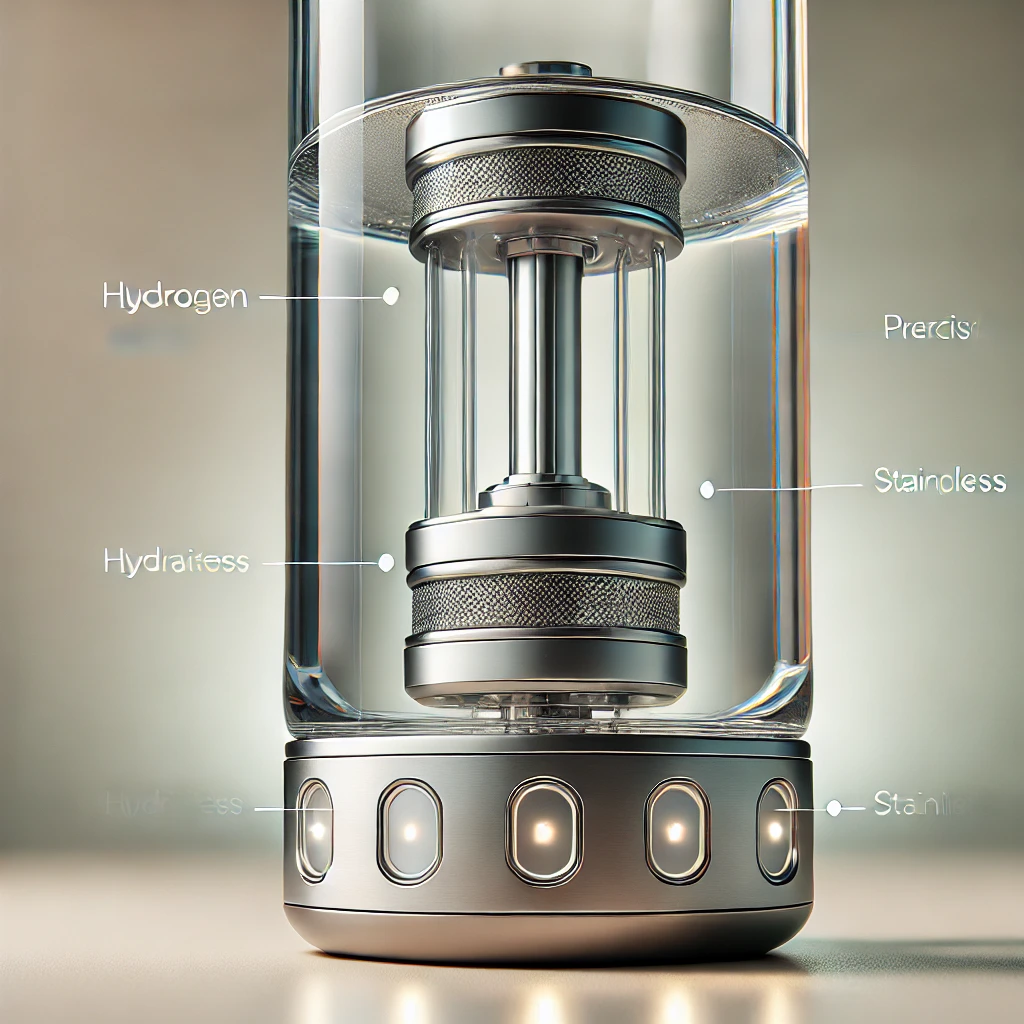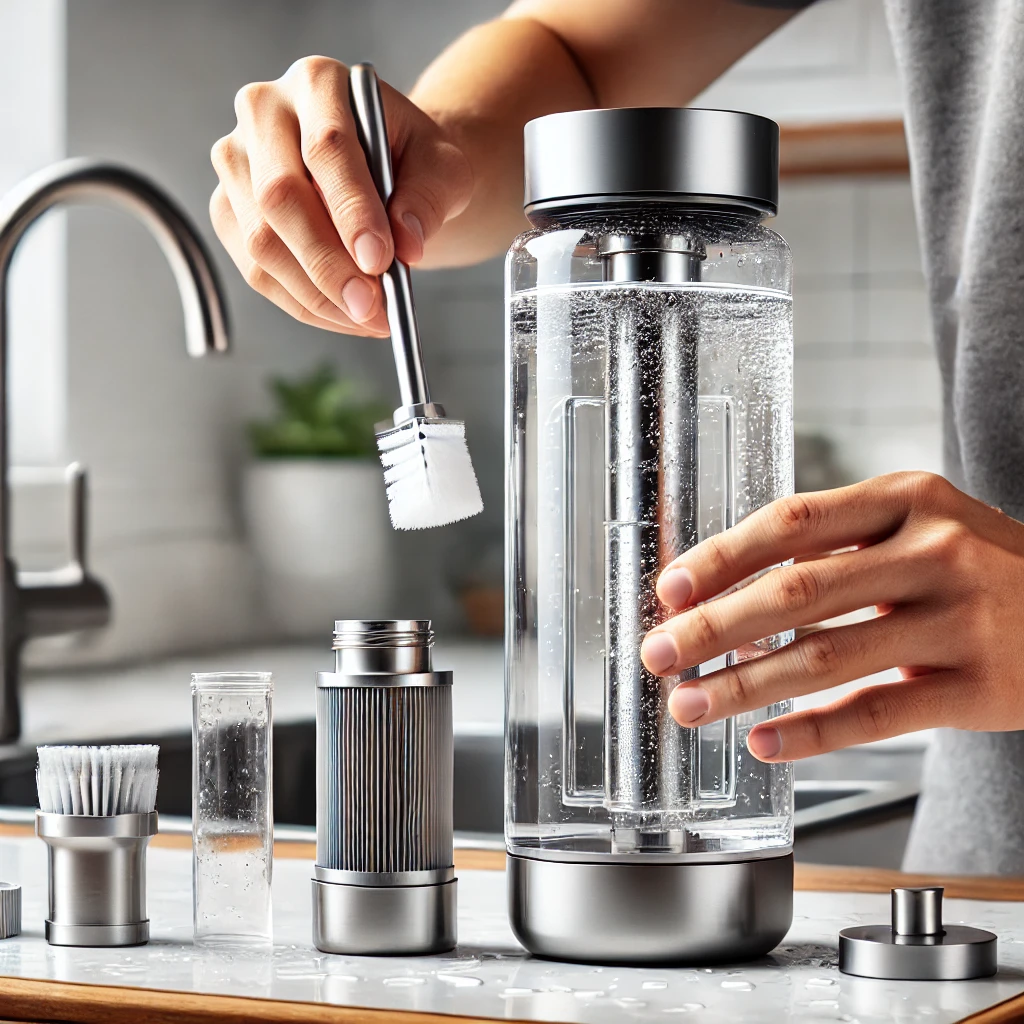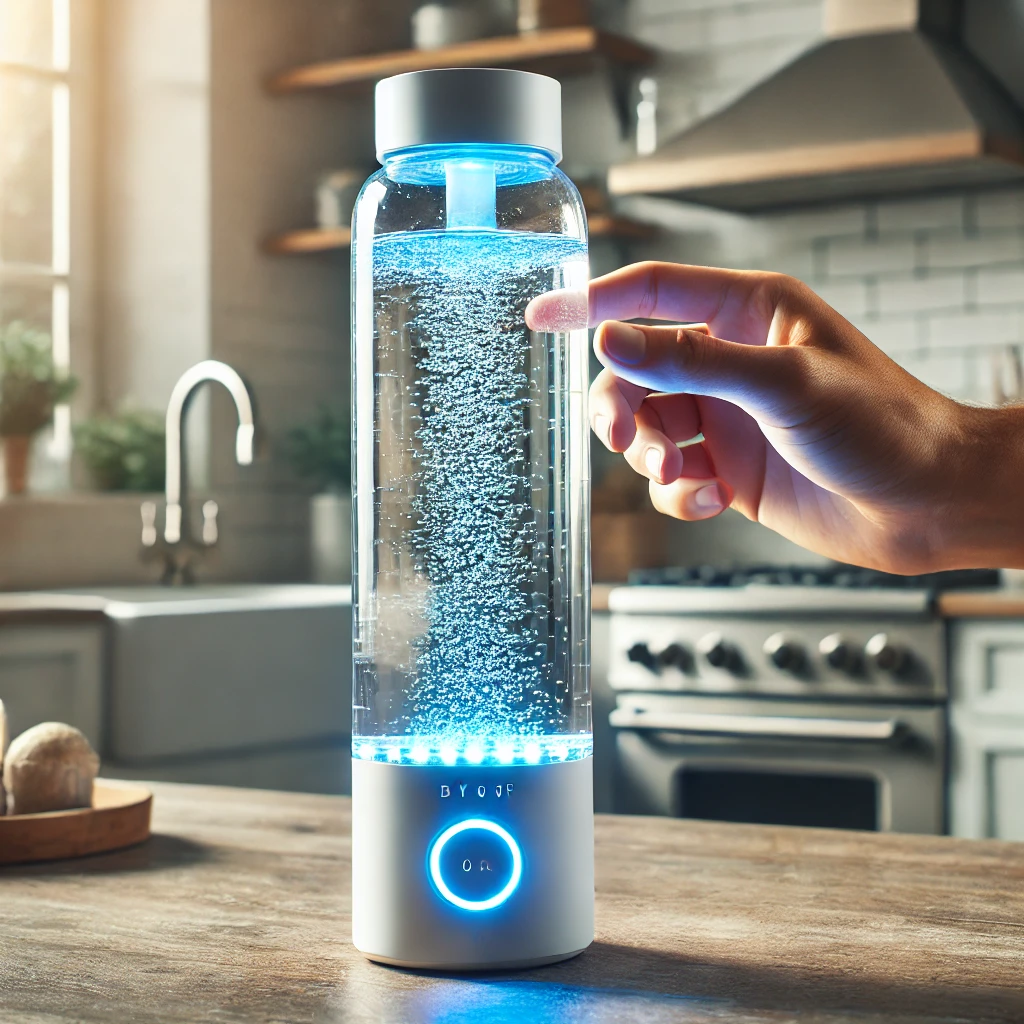How Long Do Hydrogen Water Bottles Last? [Newest Updated]
A hydrogen water bottle is a portable device that infuses water with hydrogen gas through electrolysis, potentially offering health benefits like enhanced hydration.
![How Long Do Hydrogen Water Bottles Last? [Newest Updated]](https://besthydrogenwatermachine.com/wp-content/uploads/2024/08/How-Long-Do-Hydrogen-Water-Bottles-Last.webp)
A hydrogen water bottle typically lasts between 8 to 12 hours of continuous use on a single charge. Meanwhile, the average lifespan of a hydrogen water bottle ranges from 2 to 3 years. This guide explores what factors influence their lifespan and maintenance tips to extend the life of your hydrogen water bottle, helping you maximize your investment.
The Lifespan of Hydrogen Water Bottles
Power Source and Battery Life
Single Charge Usage Duration:
A hydrogen water bottle typically lasts between 8 to 12 hours of continuous use on a single charge. This duration depends on several factors, including battery capacity, the efficiency of the hydrogen generation process, and how frequently the bottle is used. For instance, a bottle with a 2000mAh battery will generally last longer than one with a 1500mAh battery, assuming similar usage patterns. The efficiency of the electrolysis process also plays a role; more efficient systems consume less power, extending usage time.

Frequent recharging, however, can reduce the overall lifespan of the battery. Over time, rechargeable batteries tend to degrade, leading to shorter usage periods after each charge. To maximize battery life, it is recommended to fully charge the bottle before use and avoid partial charges when possible. Using the bottle at moderate intervals rather than continuously can also help maintain battery health.
Studies on lithium-ion batteries, commonly used in these bottles, suggest that after 300 to 500 charge cycles, the battery’s capacity may reduce by up to 20%. This reduction means that a bottle initially lasting 10 hours might only last 8 hours after a year of regular use.
How Long Does A Hydrogen Water Bottle Last?
Average Lifespan:
The average lifespan of a hydrogen water bottle ranges from 2 to 3 years. This estimate varies based on the quality of the materials, the construction of the bottle, and how well it is maintained. High-quality models, often constructed with stainless steel or high-grade plastic, tend to last longer than cheaper alternatives.
For example, a hydrogen water bottle with robust seals and gaskets may prevent leaks and maintain pressure more effectively, contributing to a longer lifespan. Conversely, bottles with inferior construction or lower-quality materials might begin to degrade within a year, particularly if used frequently or exposed to harsh conditions.
Different models come with different lifespans, often indicated by the manufacturer. A premium model with advanced electrolysis technology and durable construction might be advertised to last up to 4 years. On the other hand, budget models with basic features might be expected to last around 1 to 2 years, depending on usage and care.
Consumer reviews and user reports often reflect these lifespan ranges. Many users report that with proper maintenance, including regular cleaning and careful storage, their bottles have exceeded the manufacturer’s lifespan estimate. However, neglecting these practices can lead to early failures, particularly in the battery and hydrogen generation components.
Key Factors Influencing the Durability of Hydrogen Water Bottles
Material
The material of a hydrogen water bottle plays a significant role in its durability and safety. Different materials offer various levels of resistance to wear and tear, as well as potential concerns about leaching.
| Material | Durability | Leaching Concerns |
| Stainless Steel | Highly durable, resistant to corrosion | No leaching; safe for long-term use |
| Glass | Non-reactive, maintains purity | No leaching; fragile and prone to breakage |
| Plastic | Varies; can crack or degrade over time | Potential leaching, especially with heat exposure |
Stainless steel bottles are known for their durability and resistance to corrosion, making them a reliable choice for long-term use. They do not leach harmful chemicals, ensuring the safety of your hydrogen-infused water.
Glass bottles, while excellent at maintaining water purity, are fragile. They can break easily if dropped, which limits their practical use. However, they do not pose any leaching risks.
Plastic bottles vary in durability depending on the quality. Some plastics may degrade or crack over time, particularly when exposed to heat. There is also a concern about chemicals like BPA leaching into the water, especially with prolonged use.
Manufacturing Quality
The quality of manufacturing directly affects the lifespan of a hydrogen water bottle. Key components such as seals, gaskets, and overall construction determine how well the bottle performs over time.

Seals and Gaskets:
High-quality seals and gaskets are crucial in preventing leaks and maintaining the pressure required for effective hydrogen generation. Poor seals can lead to leaks, reducing the bottle’s effectiveness and lifespan. Ensuring that seals are made from durable, non-reactive materials will help extend the life of the bottle.
Overall Construction:
The construction quality, including how the bottle is welded and fitted, impacts its durability. Bottles with precise welding and strong joints are less likely to fail over time. For example, a well-constructed bottle will withstand regular use without developing cracks or weak points.
Impact of Manufacturing Defects:
Manufacturing defects such as poor sealing, uneven surfaces, or weak structural integrity can significantly reduce the lifespan of a hydrogen water bottle. These issues might not be immediately apparent but can lead to premature failure, especially in bottles made from less durable materials.
Usage and Care
How you use and care for your hydrogen water bottle also influences its longevity. Proper usage and maintenance can help extend its life.

Frequency of Use:
The more frequently you use your hydrogen water bottle, the faster it may wear out. Daily use puts more strain on components like the battery, seals, and gaskets. In contrast, occasional use might allow these parts to last longer.
Cleaning Methods:
To avoid damaging your bottle, clean it regularly using gentle methods. Avoid harsh chemicals and abrasive materials, as these can cause scratches or weaken the structure over time. A mild detergent and soft cloth are typically sufficient to keep the bottle in good condition.
Storage Conditions:
Proper storage is essential to prolong the lifespan of your hydrogen water bottle. Extreme temperatures, high humidity, and direct light exposure can degrade the materials. Store the bottle in a cool, dry place away from direct sunlight to prevent warping, discoloration, or other damage.
Hydrogen Generation Method
The method used to generate hydrogen in the bottle also affects its durability. There are two main methods: electrolysis and magnesium tablets.
Electrolysis:
Electrolysis is the process of using electrical current to generate hydrogen from water. This method is effective but can cause wear and tear on the electrodes over time. Regular maintenance, such as cleaning the electrodes and ensuring they remain in good condition, can help prolong the bottle’s lifespan.
Magnesium Tablets:
An alternative to electrolysis, magnesium tablets dissolve in water to produce hydrogen. This method is less taxing on the bottle’s components but requires regular replacement of the tablets. The need for frequent cleaning to prevent residue buildup can also affect the bottle’s durability.
Maintenance Tips to Extend the Life of Your Hydrogen Water Bottle
Cleaning
Step-by-Step Cleaning Guide:
- Disassemble the Bottle: Start by carefully disassembling the bottle, and removing any detachable parts like the lid, seals, and filters.
- Rinse with Warm Water: Rinse all parts with warm water to remove any loose debris.
- Use a Mild Detergent: Apply a small amount of mild detergent to a soft cloth or sponge. Avoid harsh chemicals that can damage the bottle’s components.
- Clean the Interior and Exterior: Gently scrub the interior and exterior surfaces of the bottle. Pay extra attention to the areas around the seals and gaskets where residue can accumulate.
- Rinse Thoroughly: Rinse all parts thoroughly with clean water to remove any soap residue.
- Dry Completely: Allow all parts to air dry completely before reassembling. Moisture can lead to mold growth or corrosion.

Avoiding Residue Buildup:
- Regular Cleaning: Clean your bottle after every use to prevent residue buildup. This is particularly important if you use the bottle for hydrogen generation, as mineral deposits can affect performance.
- Check for Buildup: Periodically check the electrodes or other hydrogen-generating components for any signs of buildup. If necessary, soak these parts in a vinegar solution to dissolve any deposits.
Proper Storage
Optimal Storage Conditions:
- Cool, Dry Place: Store the bottle in a cool, dry place. Avoid locations with high humidity or fluctuating temperatures, as these can cause the materials to degrade over time.
- Avoid Direct Sunlight: Prolonged exposure to direct sunlight can cause plastic components to warp or degrade and may also affect the performance of the hydrogen generation system.
- Ventilation: Ensure the storage area is well-ventilated to prevent moisture buildup, which can lead to mold or corrosion.
Tips for Minimizing Wear and Tear
Gentle Handling:
- Avoid Drops and Impacts: Always handle your bottle with care. Dropping the bottle can damage both the exterior and the internal components, particularly the electrolysis chamber.
- Don’t Over-Tighten: When reassembling your bottle after cleaning, avoid over-tightening the seals and gaskets. Over-tightening can cause them to wear out faster and may lead to leaks.

Scheduled Maintenance:
- Regular Inspections: Periodically check for signs of wear and tear, such as cracks, loose seals, or diminished battery performance. Address these issues promptly to prevent further damage.
- Replace Parts as Needed: Replace any worn-out parts, such as seals, gaskets, or filters, according to the manufacturer’s recommendations. Using worn parts can compromise the bottle’s effectiveness and shorten its lifespan.
Signs It’s Time to Replace Your Hydrogen Water Bottle
Reduced Battery Efficiency
Over time, the battery in your hydrogen water bottle will start to lose its efficiency. Identifying this decline early can help you decide when it’s time to replace the bottle.

How to Identify Battery Decline:
- Shorter Usage Periods: If you notice that the bottle holds a charge for significantly less time than when it was new, this is a key indicator. A battery that once lasted 10 hours might now only last 6 or 7 hours.
- Longer Charging Times: Another sign is if the battery takes longer to charge fully. This is often a sign of aging in lithium-ion batteries, which are commonly used in hydrogen water bottles.
Expected Battery Lifespan:
- Under normal use, the battery in a hydrogen water bottle should last for about 300 to 500 charge cycles. This typically equates to 1 to 2 years of regular use. If the battery performance drops significantly within this period, it might be a sign of a defect, and you should consider replacing the bottle.
Malfunctioning Electrolysis Chambers
The electrolysis chamber is the core of your hydrogen water bottle, responsible for generating hydrogen gas. If this component starts to malfunction, it may be time for a replacement.
Signs of Electrolysis Malfunction:
- Reduced Hydrogen Production: If the water is producing fewer bubbles or taking longer to generate hydrogen, this could indicate that the electrolysis chamber is wearing out.
- Unusual Noises: Listen for unusual sounds during operation. Clicking, buzzing, or any irregular noises can signal that the electrolysis process is not functioning correctly.
Troubleshooting and Replacement:
- Cleaning Electrodes: Sometimes, a simple cleaning of the electrodes can resolve these issues. However, if cleaning doesn’t help, and the performance continues to decline, it’s likely time to replace the bottle.
- Consider the Age of the Bottle: If the bottle is over 2 to 3 years old and these issues arise, replacement might be more cost-effective than repair.
Wear The Materials
The materials used in the construction of your hydrogen water bottle will also degrade over time. Recognizing the signs of wear can prevent potential leaks or contamination.
Common Signs of Material Wear:
- Cracks in Plastic: For bottles made of plastic, look for any visible cracks. These can compromise the bottle’s integrity, leading to leaks or even breakage.
- Corrosion on Metal Parts: Stainless steel components may begin to show signs of corrosion, especially if exposed to moisture for extended periods. Corrosion can weaken the structure and contaminate the water.
- Chips in Glass: If your bottle is made of glass, inspect it regularly for chips or cracks. Even small imperfections can expand, leading to a dangerous situation where the bottle could shatter.
When to Replace:
- Immediate Replacement: Any visible cracks, chips, or corrosion warrant immediate replacement. These are clear signs that the bottle is no longer safe to use.
- Proactive Replacement: Even if no significant damage is visible, consider replacing your bottle every 2 to 3 years to ensure continued safety and functionality.
Conclusion
This post discusses the lifespan of hydrogen water bottles, including battery life, material wear, and proper maintenance. Regular care and timely replacement ensure your bottle remains effective.
It’s essential to choose good, high-quality, and top-rated hydrogen water bottles for longer use and consistent benefits.
FAQs
- What is the average lifespan of a hydrogen water bottle?
The average lifespan of a hydrogen water bottle is typically 2 to 3 years, depending on the quality of the materials, the frequency of use, and how well it is maintained.
- How often should I charge my hydrogen water bottle?
You should charge your hydrogen water bottle whenever the battery runs low, usually after 8 to 12 hours of use. Avoid letting the battery completely drain, as this can shorten its lifespan.
- What materials are best for hydrogen water bottles?
Stainless steel and high-grade glass are the best materials for hydrogen water bottles due to their durability and resistance to leaching. High-quality plastic can also be used but should be BPA-free.
- How do I know when my hydrogen water bottle needs to be replaced?
Signs that your hydrogen water bottle needs to be replaced include reduced battery efficiency, malfunctioning electrolysis chambers, and visible wear on materials like cracks, corrosion, or chips.
- Can improper storage shorten the life of my hydrogen water bottle?
Yes, improper storage can shorten the life of your bottle. Store it in a cool, dry place away from direct sunlight and extreme temperatures to prevent material degradation and battery damage.
